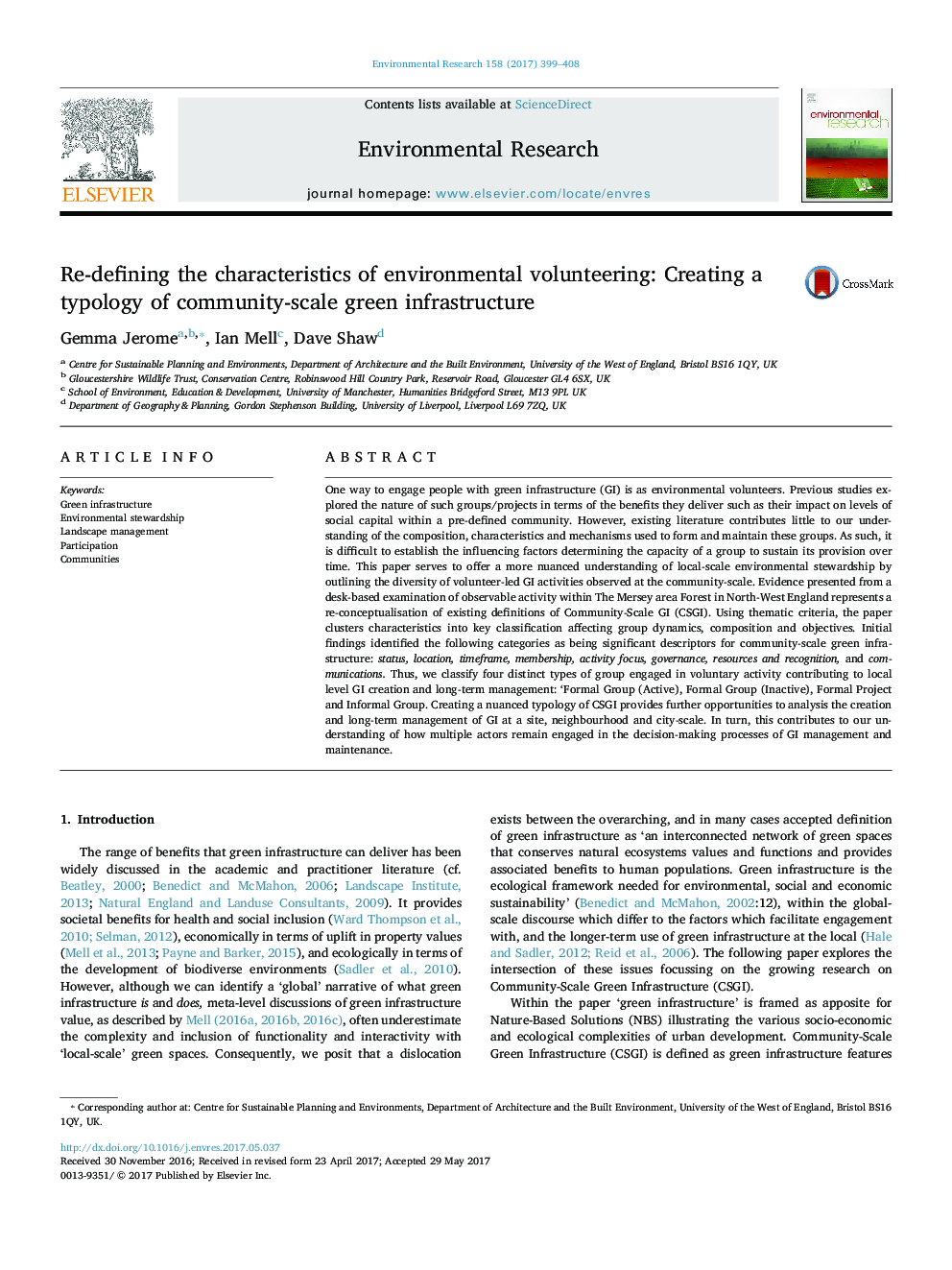| Article ID | Journal | Published Year | Pages | File Type |
|---|---|---|---|---|
| 5756374 | Environmental Research | 2017 | 10 Pages |
Abstract
One way to engage people with green infrastructure (GI) is as environmental volunteers. Previous studies explored the nature of such groups/projects in terms of the benefits they deliver such as their impact on levels of social capital within a pre-defined community. However, existing literature contributes little to our understanding of the composition, characteristics and mechanisms used to form and maintain these groups. As such, it is difficult to establish the influencing factors determining the capacity of a group to sustain its provision over time. This paper serves to offer a more nuanced understanding of local-scale environmental stewardship by outlining the diversity of volunteer-led GI activities observed at the community-scale. Evidence presented from a desk-based examination of observable activity within The Mersey area Forest in North-West England represents a re-conceptualisation of existing definitions of Community-Scale GI (CSGI). Using thematic criteria, the paper clusters characteristics into key classification affecting group dynamics, composition and objectives. Initial findings identified the following categories as being significant descriptors for community-scale green infrastructure: status, location, timeframe, membership, activity focus, governance, resources and recognition, and communications. Thus, we classify four distinct types of group engaged in voluntary activity contributing to local level GI creation and long-term management: 'Formal Group (Active), Formal Group (Inactive), Formal Project and Informal Group. Creating a nuanced typology of CSGI provides further opportunities to analysis the creation and long-term management of GI at a site, neighbourhood and city-scale. In turn, this contributes to our understanding of how multiple actors remain engaged in the decision-making processes of GI management and maintenance.
Related Topics
Life Sciences
Environmental Science
Health, Toxicology and Mutagenesis
Authors
Gemma Jerome, Ian Mell, Dave Shaw,
